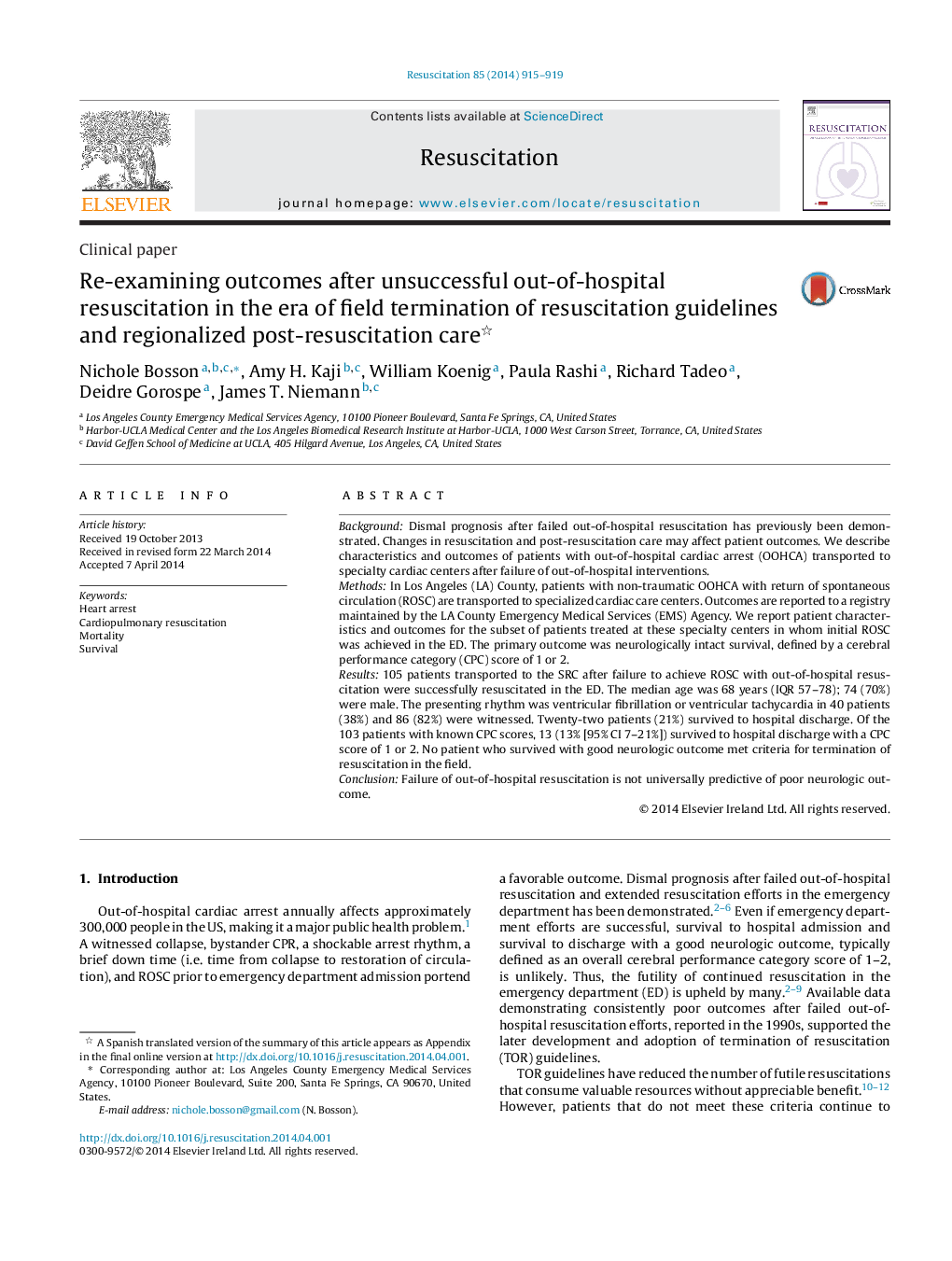| Article ID | Journal | Published Year | Pages | File Type |
|---|---|---|---|---|
| 5998472 | Resuscitation | 2014 | 5 Pages |
BackgroundDismal prognosis after failed out-of-hospital resuscitation has previously been demonstrated. Changes in resuscitation and post-resuscitation care may affect patient outcomes. We describe characteristics and outcomes of patients with out-of-hospital cardiac arrest (OOHCA) transported to specialty cardiac centers after failure of out-of-hospital interventions.MethodsIn Los Angeles (LA) County, patients with non-traumatic OOHCA with return of spontaneous circulation (ROSC) are transported to specialized cardiac care centers. Outcomes are reported to a registry maintained by the LA County Emergency Medical Services (EMS) Agency. We report patient characteristics and outcomes for the subset of patients treated at these specialty centers in whom initial ROSC was achieved in the ED. The primary outcome was neurologically intact survival, defined by a cerebral performance category (CPC) score of 1 or 2.Results105 patients transported to the SRC after failure to achieve ROSC with out-of-hospital resuscitation were successfully resuscitated in the ED. The median age was 68 years (IQR 57-78); 74 (70%) were male. The presenting rhythm was ventricular fibrillation or ventricular tachycardia in 40 patients (38%) and 86 (82%) were witnessed. Twenty-two patients (21%) survived to hospital discharge. Of the 103 patients with known CPC scores, 13 (13% [95% CI 7-21%]) survived to hospital discharge with a CPC score of 1 or 2. No patient who survived with good neurologic outcome met criteria for termination of resuscitation in the field.ConclusionFailure of out-of-hospital resuscitation is not universally predictive of poor neurologic outcome.
